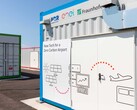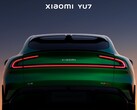According to Advanced Science, the core principle behind a new system developed by South Korean researchers is an in-situ "interlocking electrode-electrolyte" (IEE) structure, in which the electrode and electrolyte components are permanently bonded together. Unlike conventional, layered lithium-ion cells, this tight interlocking prevents structural weakening due to charging cycles.
High battery performance in initial tests
In laboratory tests, prototype cells developed using an IEE structure achieved a gravimetric energy density of 403.7 Wh/kg and a volumetric density of 1,300 Wh/L. These values are significantly higher than current series batteries such as Tesla's 4680 cell (241 Wh/kg, 643 Wh/L).
Suitability for silicon anodes
A key advantage of the IEE structure is its suitability for silicon anodes. In theory, silicon can store around ten times more lithium ions than graphite but suffers from significant volume changes during charging, which has severely limited its service life to date. The solid bond in the IEE design stabilizes the anode and absorbs these stresses, which could make the use of silicon as an active material more practical.
Laboratory-scale technology
Despite its high performance data, the technology is currently still limited to laboratory scale. Manufacturing requires new material processes, making transfer to industrial production lines complex and costly. Several years of development work are therefore likely to be necessary before commercial use is possible.
Enormous potential for battery technology
However, if IEE technology becomes widespread, it could significantly increase the energy content and service life of batteries. This would have far-reaching implications not only for electric vehicles, but also for smartphones, laptops and stationary storage devices, especially at a time when manufacturers are increasingly looking for ways to simultaneously improve range, charging cycles and sustainability.

























